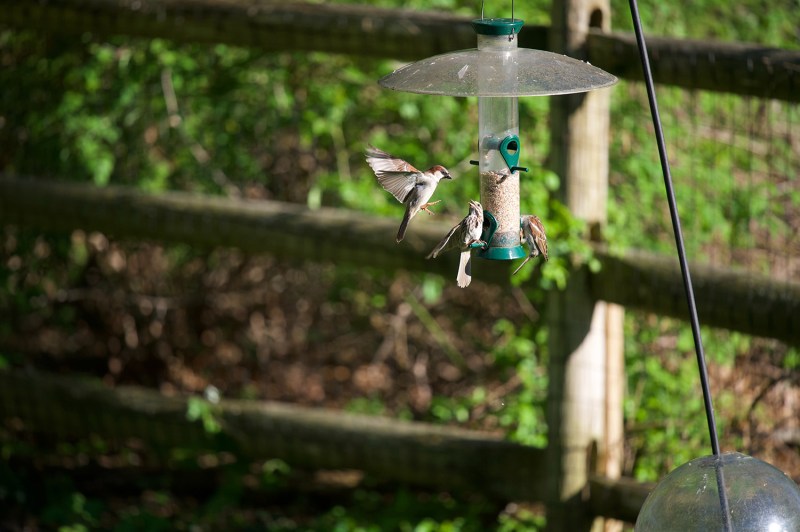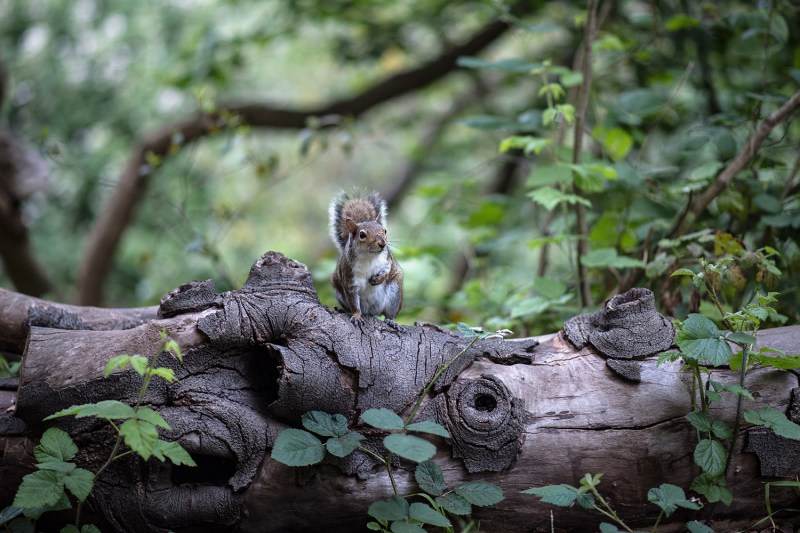For most of us, relaxing in the backyard only requires a couple of lounge chairs, a grill, and your best cooler full of lawnmower beers. However, abundant wildlife can add a whole new experience of fulfillment and practicality to your outdoor space. Whether you live in a fifth-story apartment with a fire escape “balcony” or on a 10-acre ranch, these tips can help level up your backyard, deck, or patio into a wildlife sanctuary.
Tips to create your own wildlife-friendly oasis

Feed the birds
One of the best methods to bolster the wildlife population in your backyard is to feed the birds. Setting up even one bird feeder with a broad-use seed that wins over a variety of species is a good start. If you have the room, multiple feeders (including hummingbird feeders) with a range of seeds and feed are even better. Large bags of seeds are inexpensive and readily available at most pet shops and farm supply stores.
Keep the birds clean, too
Birdbaths might remind you of Nana’s house. They are, however, an essential part of building a wildlife-friendly backyard sanctuary. Birds love and need natural spots for drinking and bathing. Adding a handful of pebbles or rocks to the bottom also infuses the water with essential minerals and encourages butterflies to gather as well. Be sure to hose out the bath every few days to stave off mold and bacteria buildup.
Don’t love your lawn to death
Keeping your lawn properly maintained is important, but over-manicuring and adding too many fertilizers can discourage wildlife. Mowing and trimming your grass like a golf course might keep your neighbors happy. For wildlife, however, variety plays a huge role. Tidying up the grass near the center provides a place for birds and small mammals like foxes and badgers to forage. Consider leaving the edges longer to give invertebrates a place to shelter and hide. Replacing hard-to-maintain greenery with native trees, shrubs, and flowers is a great way to provide natural variety to your backyard. It also minimizes maintenance and attracts more wildlife.
Let the trees be
It’s tempting to want to tidy up your yard of dead or dying trees. If they’re not posing a danger, however, consider letting them be. All trees — even dead ones — can serve as new nesting places for birds. Tree hollows also provide safe spaces for ground animals to burrow, hide, and escape from predators.
Put out the bat signal
Thanks mostly to horror movies, bats have suffered a serious social stigma. In reality, they’re mostly harmless to humans. What’s more, they’re excellent natural exterminators. Working mainly at night, they can rid your backyard of massive amounts of insects, especially mosquitoes and agricultural pests. Small wooden bat houses are cheap, easy to install, and readily available on Amazon.
Welcome new toad tenants
Like bats, toads also make great garden tenants. They prey on insects, snails, and slugs — up to 10,000 in a single season. Relying on toads to maintain your backyard pest population minimizes the need for artificial pesticides and other nasty chemicals. Attract more toads by installing toad houses — basically any small, damp, enclosed space. These can be as simple as a rock pile covered with fallen leaves. An old, chipped planter or clay pot works great too. Flip it over, prop it up on a stone or brick, and leave it in an out-of-the-way area of your backyard. Just be sure any chips are wide enough for your new toad residents to use as a door.
Build a pond
For most of us, building a private pond is a luxury. If you have space and ability, however, a pond can be a great asset to your backyard ecosystem. It provides diversity and helps balance the variety and types of species likely to gather in your outdoor space.
Corral your cats
Cats can wreak havoc on your backyard sanctuary. Most house cats are adept hunters, which means they’re likely to scare off or eat birds, frogs, and small mammals. If at all possible, keep your house cats inside. It’s better for your backyard and better for your feline’s overall health, too.
More tips

Let it get a little wild
Leave some areas of your yard with tall grasses, fallen leaves, and brush piles. These create safe havens for small animals. Trees offer shelter, shade, and even nesting spots, too.
Consider a rain garden
A rain garden will help you manage stormwater runoff in your yard and provide a natural watering hole for wildlife.
Research local wildlife
Learn about the animals native to your area. As you observe and enjoy your backyard as the habitat flourishes, keep an eye out for the new visitors you’ve attracted.




